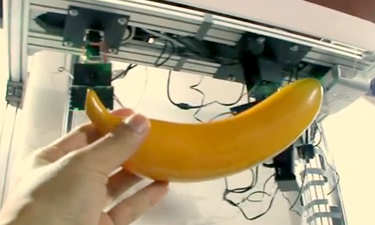CONCEPT & MOTIVATION
Direct interaction with everyday objects augmented with artificial affordances may be an approach to HCI capable of leveraging natural human capabilities. Rich Gold described in the past ubiquitous computing as an “enchanted village” in which people discover hidden affordances in everyday objects that act as “human interface “prompt[s]” (R. Gold, “This is not a pipe.” Commun. ACM 36, July 1993.). In this project we explore the reverse scenario: a ubiquitous intelligence capable of discovering and instantiating affordances suggested by human beings (as mimicked actions and scenarios involving objects and/or drawings).

The shape of the object can also be a very good cue to infer the property to be augmented, thus taking advantage of skeumorphism in everyday objects. Approaching them and miming the requested use should prompt ubiquitous computing resources nearby (including input-output interfaces) to “condense” around the real object, by supplementing it with artificial affordances through multi-modal AR.

Ubiquitous computing + Aware Computing + Spatial Augmented Reality* = Invoked Computing ?
In other words, the aim of the “invoked computing” project is to develop a multi-modal AR system able to turn everyday objects into computer interfaces or communication devices on the spot. To “invoke” an application, the user just needs to mimic a specific scenario. The system will try to recognise the suggested affordance and instantiate the requested function through AR techniques. The following interview excerpt explains the motivations and origin of the idea:
| “The project started with a self-imposed challenge having both ecological and geeky motivations. The question was: could we revive an old laptop computer thrown in the garbage, not by repairing its internal components but by using Augmented Reality (our speciality), thus transforming this inert, rain-soaked object into something functional again – something that looks “alive” for any casual observer from the outside? Soon, we realised that were we to succeed, something very interesting would be happening: although the computer would be “dead”, it would perform fine thanks to the intervention of external, invisible powers. Life would be instilled from the outside; the corpse of the computer would be “possessed”, animated like a puppet by a ubiquitous “ambient intelligence”. And nobody would notice the difference. When looking for a name, I first thought about “poltergeist computing” or “zombie computing”, but the connotations were all too negative. We settled on invoked computing which seemed more appropriate: it makes you think about spiritual invocation (of invisible, higher powers) as well as of the software engineering technical expression: “invoking an application” meaning “to launch it” – Interview A. Cassinelli by Sam Price for The Guardian |
I cannot resist sharing B. Sterling powerful insight on this project:
“Augmented Reality as the graphic front-end of Ubiquity. And Ubiquity as the killer-app of Sustainability.” – Bruce Sterling, Wired, (2011)
PROTOTYPE
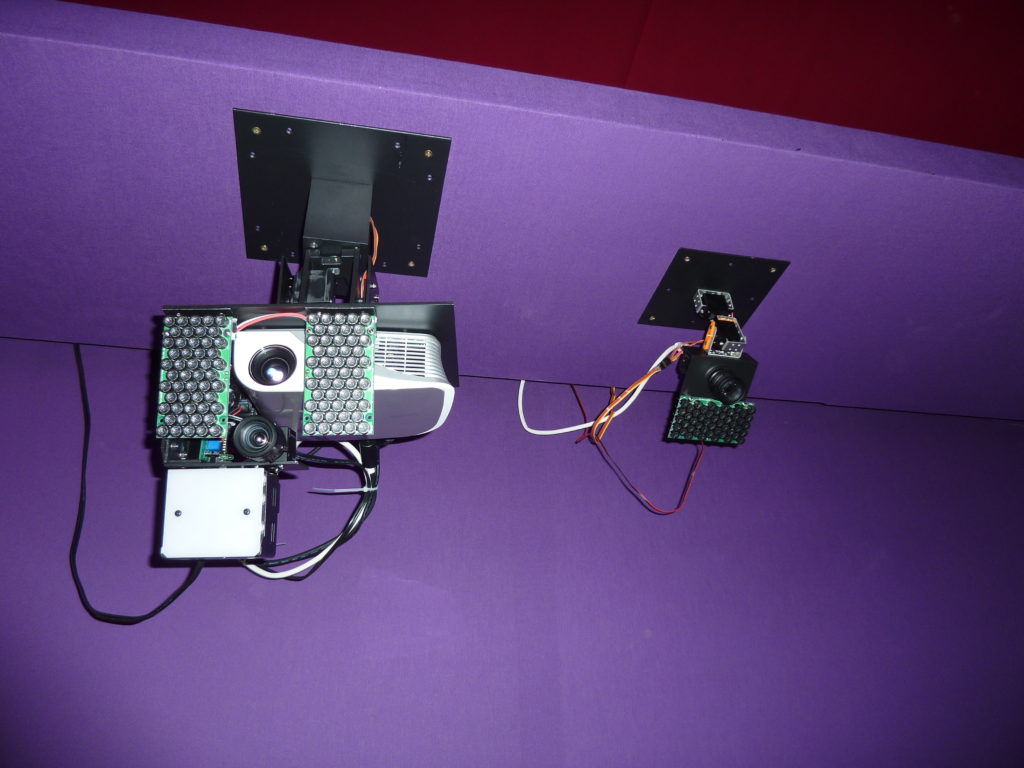 |
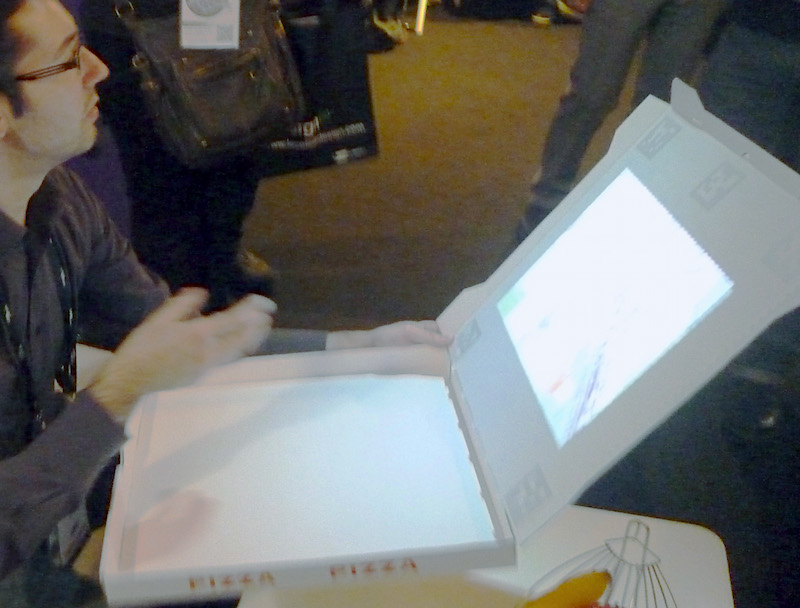 |
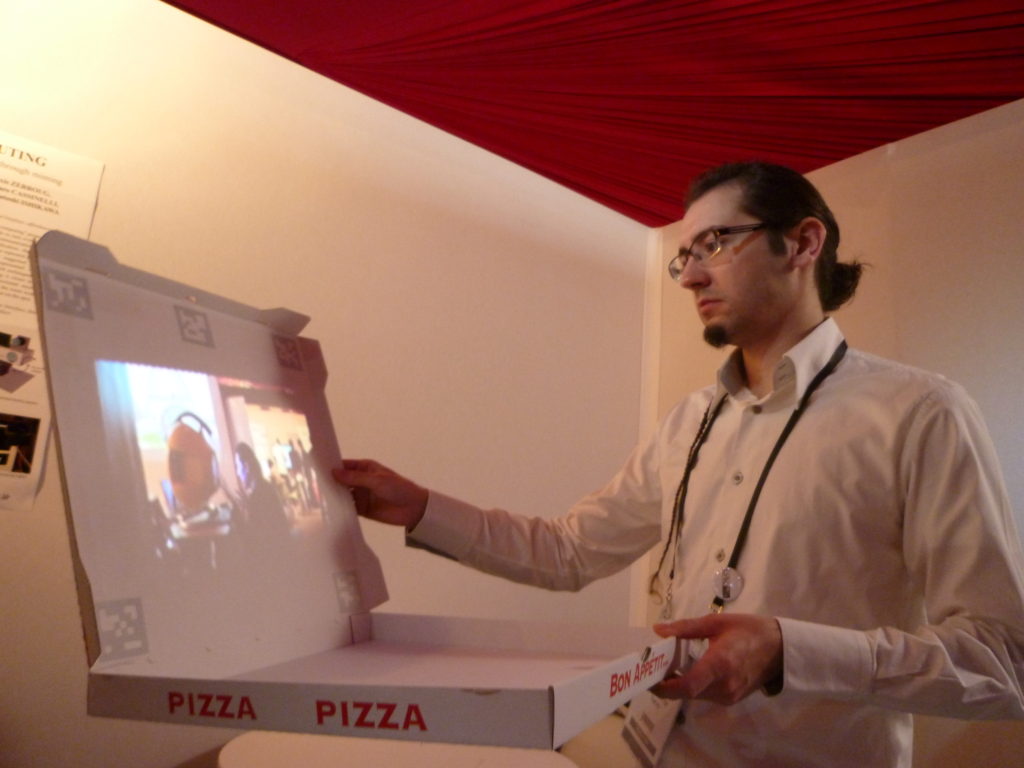 |
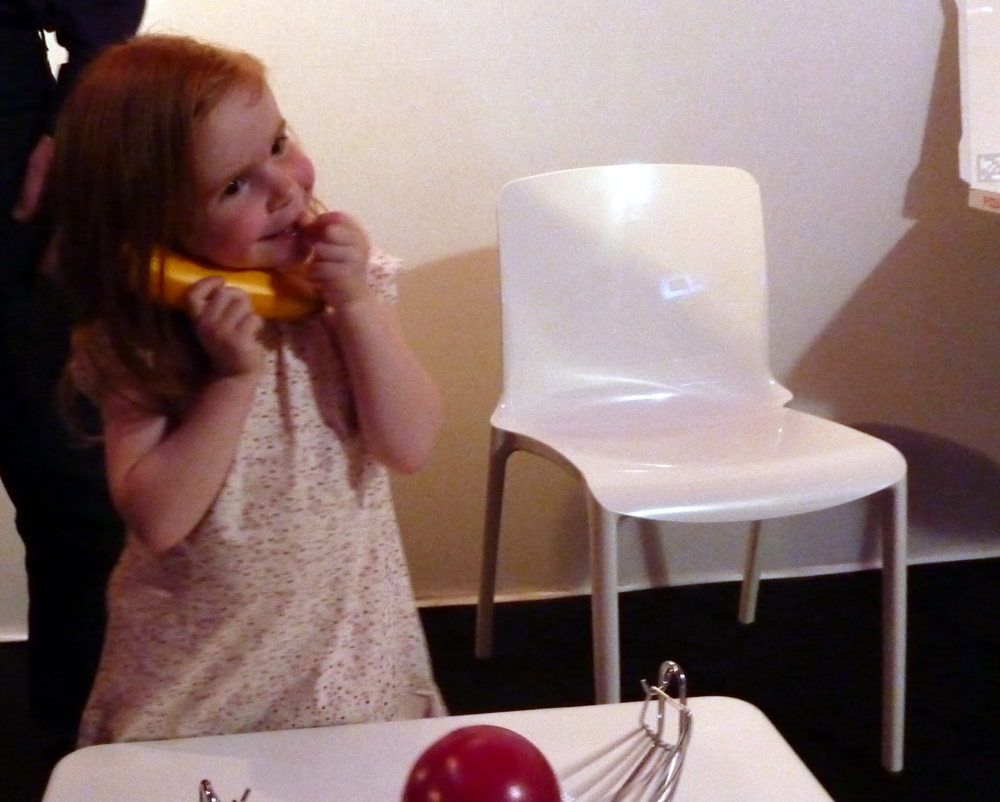 |
As a proof of principle of this interaction paradigm, we have developed a simple multi-modal AR system able to augment objects with video as well as sound. In the videos below, a banana transforms into a phone by just bringing the fruit closer to one’s ear; directional microphones and parametric speakers hidden in the room would make the banana function as a real handset on the spot. The second example “invokes” of a laptop (including its display and keyboard) over a pizza box.
(*) Spatial Augmented Reality (SAR) augments real-world objects and scenes without the use of head mounted displays or other wearable/portable device (R. Raskar, G. Welch, H. Fuchs: Spatially Augmented Reality, First Intl. Workshop on AR, Sept (1998)
For more:
- Zerroug, A., Cassinelli, A., Ishikawa, M.: Invoked computing: Spatial audio and video AR invoked through miming, Proc. VR Intl. Conf. (VRIC 2011), 6-8 April 2011, Laval, France (Jury Grand Prize) [PDF-2MB]
- Invoked Computing: Spatial audio and video AR invoked through miming – Youtube
- Invoked Computing (first test) – Youtube
Mass media:
- Wired: Augmented Reality: University of Tokyo “invoked computing”, by Bruce Sterling, Nov. 2011
- The Guardian/The Observer: Alvaro Cassinelli: you really can use a banana as a telephone, interview by Sam Price, Jan. 2012.
- Popular Science: An Augmented-Reality Bananaphone, With a Real Banana
- DiGinFo: Banana Phone And Pizza Box Laptop PC – Invoked Computing For Ubiquitous AR, Nov. 2011
- CNET: New concept turns pizza boxes, bananas into computers, Nov. 2011
- Business Weekly, Invoked Computing is top banana , Feb. 2012
- Techcrunch, Ubergizmo, etc…
